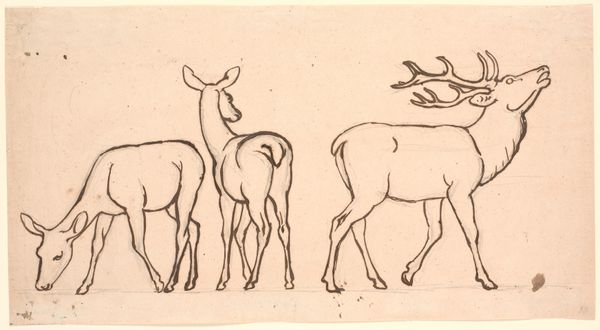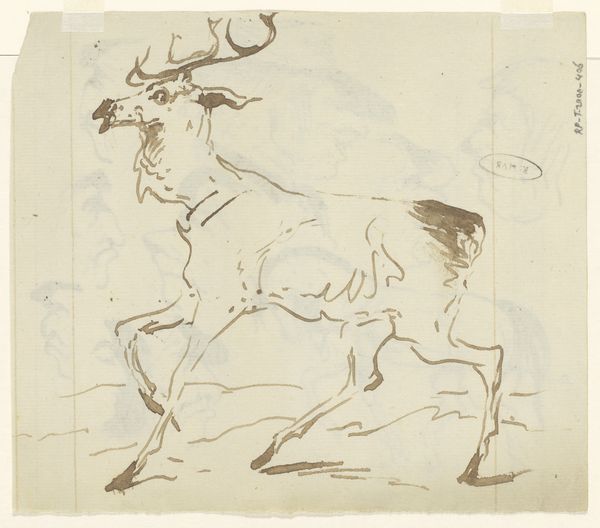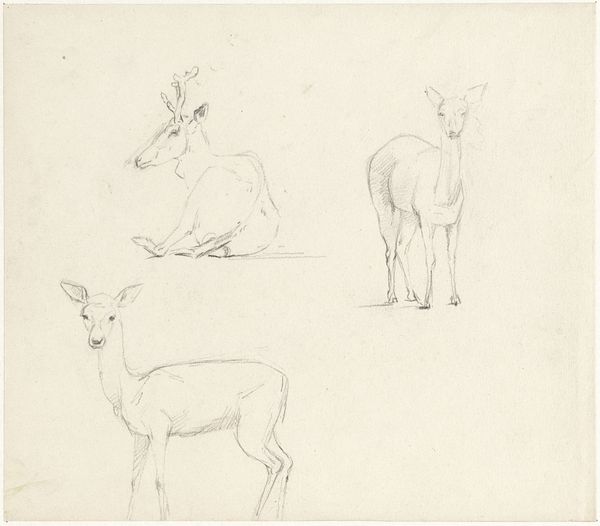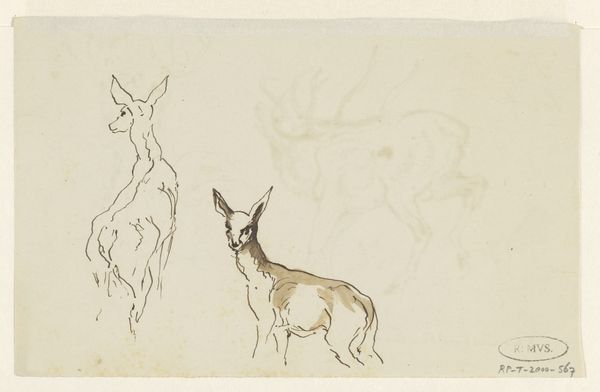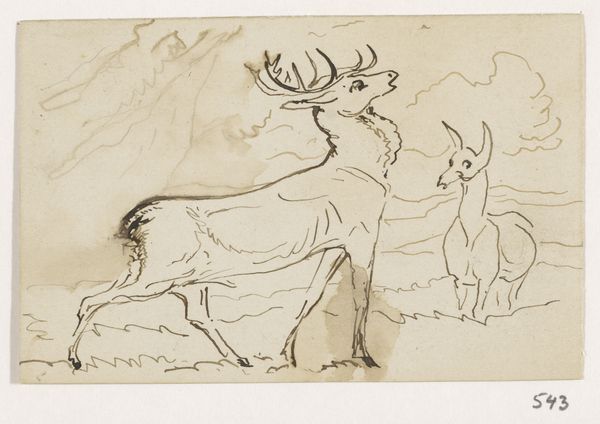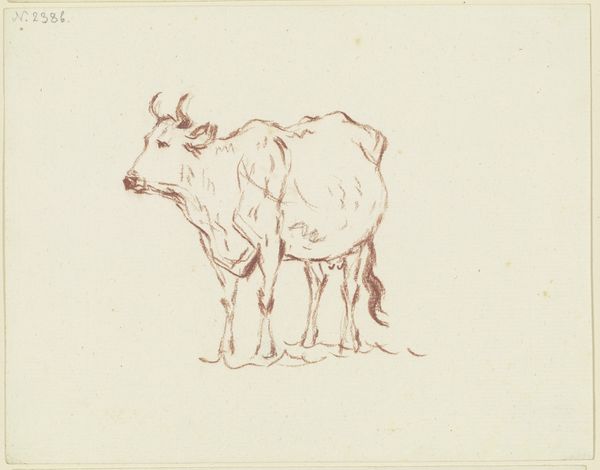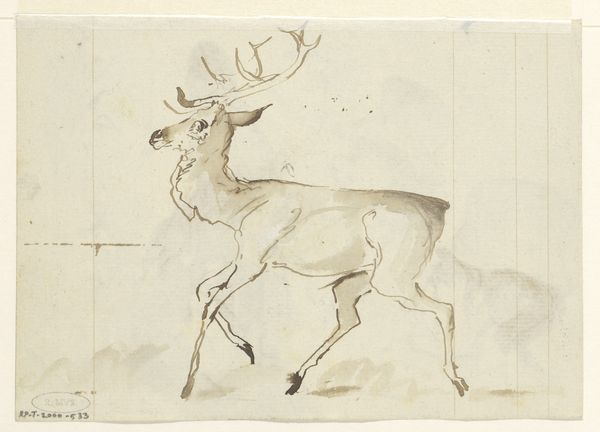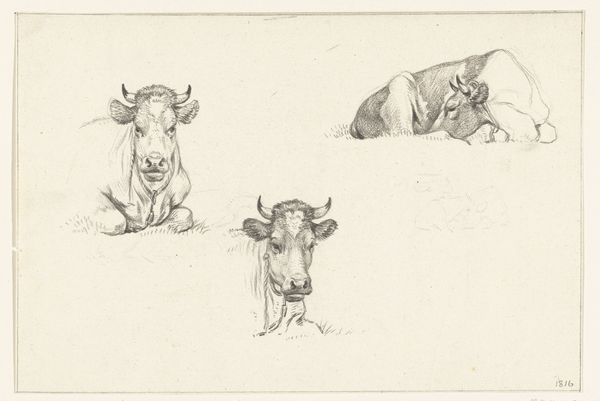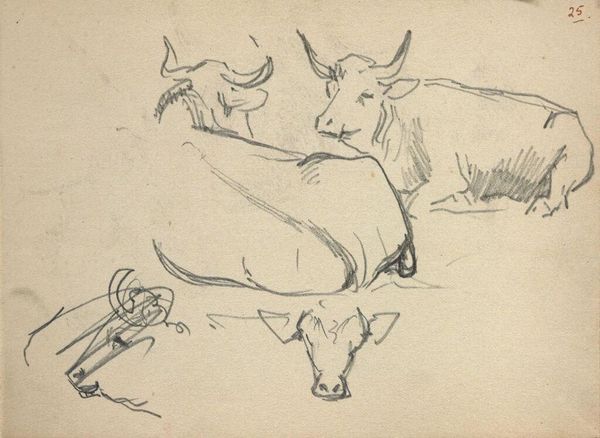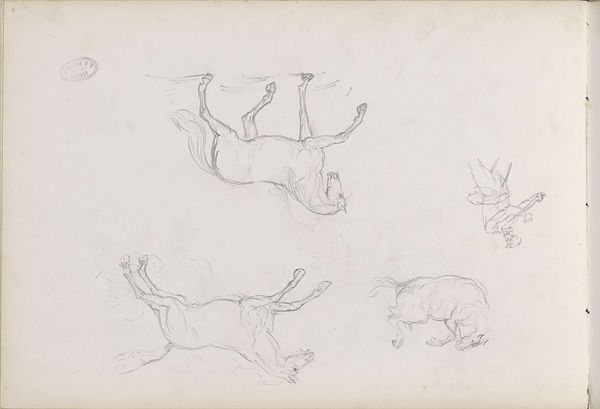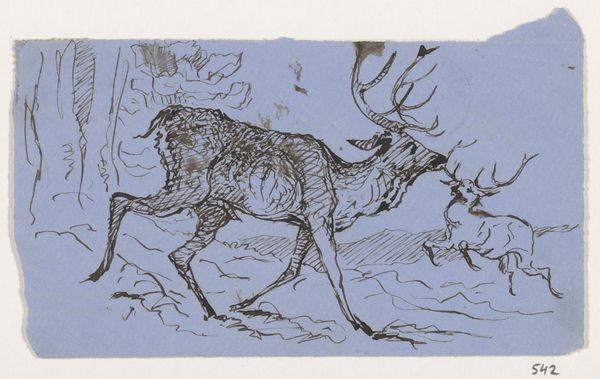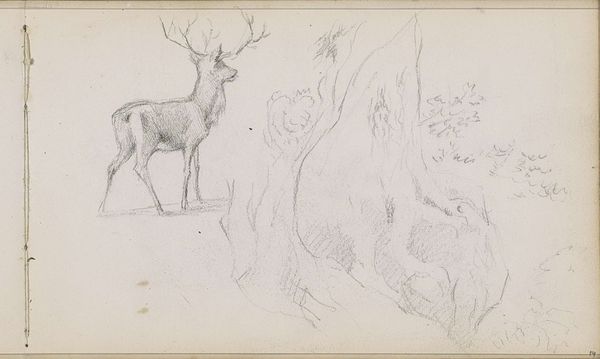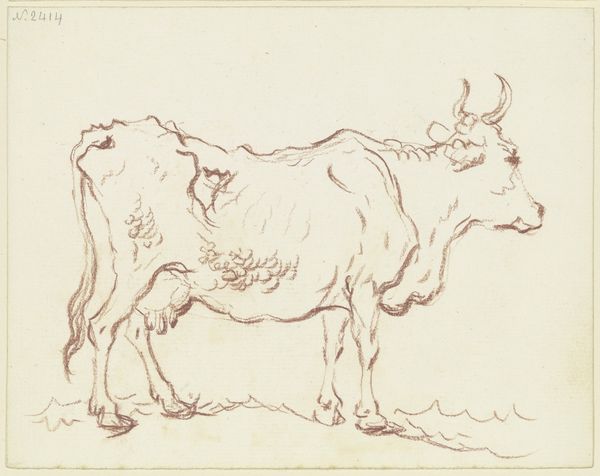
drawing, paper, chalk
#
drawing
#
toned paper
#
light pencil work
#
16_19th-century
#
pencil sketch
#
paper
#
personal sketchbook
#
german
#
ink drawing experimentation
#
pen-ink sketch
#
chalk
#
sketchbook drawing
#
watercolour illustration
#
storyboard and sketchbook work
#
sketchbook art
Copyright: Public Domain
Editor: Here we have Hans Thoma’s "Lying Stags," a pencil, chalk, and ink drawing. It looks like it's on toned paper. It’s interesting; the stags are quite simply drawn, almost like a study. What can you tell me about this work, from your perspective? Curator: Well, notice the grid underneath the stags. It highlights the means of production – Thoma is using this paper as a tool for planning a larger work. The very materiality of the paper, with its underlying grid, speaks to a system of artistic labor. It emphasizes process over polished product. Editor: That's interesting, I didn't notice the grid at first glance. So, you are suggesting the grid is deliberately left visible, it's a nod to the working process? Curator: Precisely! Thoma isn’t trying to hide the mechanics of creation. In fact, it’s a key part of what makes the work compelling. Look also at the chalk – a relatively inexpensive material, and the quick, almost utilitarian marks made with the ink. What does that say about Thoma’s view of 'high art'? Is he challenging this traditional distinction? Editor: That’s true; it uses very common, accessible materials. Perhaps he's democratizing the image-making process? Bringing 'high art' back down to Earth, showing its foundations? Curator: Yes! Think about the context – 19th-century Germany. Was Thoma reacting to, or engaging with, broader trends of industrialization and material consumption in society? What kind of paper was commonly available at the time, and how might that inform Thoma's choices here? Editor: Wow, I hadn't considered the paper itself as a signifier of something larger. Thinking about material accessibility makes me see the artwork completely differently! Curator: Indeed. By considering the means of production, and the availability of resources, we get closer to understanding Thoma’s artistic intent. Editor: Thank you. Looking at the materiality of the work certainly provides a deeper and fresh perspective.
Comments
No comments
Be the first to comment and join the conversation on the ultimate creative platform.
